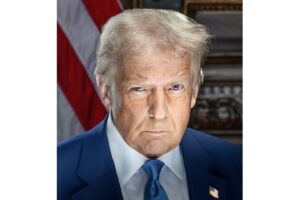Frankfurt (3/12 – 12)
The relatively rapid cohesion of disparate nations, historically competitive or even at war with one another, into the European Union came about in part because of the ongoing threat from the Soviet Union. The specter of a tank invasion from Warsaw Pact nations, today forgotten, was such a reality that the German government kept a major portion of its gold bullion across the Atlantic.
The USSR, an ally in World War II after being double-crossed by Hitler – remember the “Non-Aggression Pact signed in Moscow by von Ribbentrop and Molotov – was soon appraised as a danger in itself when, at the conclusion of hostilities, it ringed itself with unwilling “satellites”. After having suffered under brutal Nazi rule, Poland, Czechoslovakia and others found themselves subservient to Moscow, often occupied by Russian troops.
Thus in 1949 NATO, or the North Atlantic Treaty Organization, was established as an intergovernmental military alliance, encompassing 29 European countries and two North American ones. In fact it was an American creation and continues until today under US domination. Its primary purpose was stated as follows: “to safeguard the security of its members and promote peace and stability in Europe.”
A wry summary of the purpose of NATO is “…to keep the Americans in, the Germans down, and the Russians out”; this is often attributed to Lord Hastings Lionel Ismay, the first NATO Secretary General. The quote has since become a common way to describe the dynamics of NATO. The Federal Republic of Germany continues to host American military bases, nearly 40,000 American troops and nuclear weapons, just as it did during Post-WW II Occupation.
The common belief of military strategists is that a paranoid, expansionist USSR, under the tyranny of Joseph Stalin, would inevitably be at war with the democratic nations of the west. Some Soviet leaders and military may have assumed the same, although it never came to pass. The politicians talk tough, but those in charge of the weapons of mass destruction are justifiably terrified of them.
American nuclear weapons were stationed in Europe, pointed at the Soviets, in case of a sneak attack; the French, having decided to refrain from joining NATO, since President Charles de Gaulle considered it too much of an American-dominated organization, had their own, a “Force de Frappe”, part of a triad of air-, sea- and land-based nuclear weapons intended for “dissuasion”, the French term for “deterrence”.
With the exception of some strongly-anti-Communist military men, nuclear war was generally considered to be impractical, as even a small number of detonations could effectively paralyze any nation, and airtight defense against nuclear attack was simply impossible, once ICBMs proliferated. At the height of the Cuban Missile Crisis, General Curtis LeMay urged President Kennedy to launch an all-out attack on the Soviets; Kennedy mused, out loud, “Can I afford to lose twenty million voters?” that being a conservative estimate of the deaths that would result from a Russian retaliatory attack on the US mainland.
Following the totally unexpected collapse of the Soviet Union in 1991, notable as a colossal failure on the part of western intelligence organizations to anticipate, NATO was faced with finding a new raison d’etre to justify its enormous budget – mostly born by the Americans, whose military-industrial complex is the single greatest support for a deindustrialized economy, once manufacturing was offshored to the People’s Republic of China, Korea, Vietnam and other cheap-labor countries.
The much-abused Finland joined NATO in April 2023, in part because of the conflict in Ukraine. The clever Europeans, offering tempting goodies including economic benefits and modern weaponry, have managed to lure in former Soviet satellites Poland, the Czech Republic and Hungary (members since 1999), Estonia, Latvia, Lithuania, Slovakia, Slovenia and Bulgaria (all joining in 2004). It is clearly a valiant attempt at a historical “containment” of Russia – including the “oddball member” of Türkiye, a ferociously Islamist republic dedicated to the conquest of an infidel Europe, not to mention a diehard enemy of fellow NATO member Greece.
The clearly-stated American objective, in the words of a Pentagon document, is “total spectrum dominance”, with the USA as the single superpower on the face of the planet. Russia, possessing some 6000 nuclear weapons on land and at sea, is an inconvenient obstacle to the achievement of this goal; the unexpected rise of the People’s Republic of China as a military and naval force, financed by the profits from export sales across the globe, adds another challenge to American dominance. China never had a blue-water navy; it has a respectable one now, thanks in part to the Russians, as NATO has unexpectedly pushed the two legacy adversaries into a marriage of convenience.
The “Special Military Operation” of the Russian Federation in Russian-speaking eastern Ukraine, in response to reported repression and slaughter of Russian speakers in the Donbass from 2014, has been a godsend to both NATO and the western military-industrial complex, with a ready market for its tanks, helicopters, 155mm shells and other armaments. The trigger for the Russian invasion was the clearly-stated stance of Ukraine to become a member of NATO, which Russia considers an existential threat: no way will they countenance nuclear missiles three minutes’ flight from the Kremlin. While the Americans are cheering Ukraine on (while sending no soldiers to fight there), the Europeans, perhaps with a memory of what it was like to be bombed, are less enthusiastic about approving Ukrainian membership: Article 5 of the Mutual Defense Agreement states that an attack on any NATO member will require all the rest to pile in and retaliate. Europe does not fancy turning into a radioactive ashtray. The United States of America simply cannot imagine it, never having been bombed to bits.
“’Equipment that defends America and is made in America. Patriot missiles for air defense batteries, made in Arizona. Artillery shells manufactured in 12 states across the country, in Pennsylvania, Ohio, Texas. And so much more,’ the politician stated. ‘You know, just as in World War II, today patriotic American workers are building the arsenal of democracy and serving the cause of freedom.’
“Ukraine has been striking Russian logistics hubs using Lockheed Martin’s Guided Multiple Launch Rocket System, or GMLRS, that are partially made in Lufkin, Texas — a city of 34,000 people that saw its paper mill and foundry close over the last two decades.” [case study in deindustrialization.]
“It is represented by Republican Rep. Pete Sessions, a Ukraine aid supporter, who said Friday that the U.S. has an obligation to protect Ukraine under its post-Cold War security commitments.
“The U.S. has awarded hundreds of millions of dollars in contracts for the High Mobility Artillery Rocket System launchers that fire GMLRS and are made in Camden, Ark., a town of about 10,000 people that is 100 miles south of Little Rock.
“Republican Rep. Bruce Westerman, who represents Camden, said critics of government spending can be surprised to know some of that spending is going back to communities like his.”
In the opinion of many of these fine folks, killing Russians is a great idea, particularly when it is such a profitable one. That Russia will escalate with nuclear weapons, obliging NATO to do the same, is dismissed as ridiculous.
As ever, to understand the deep dynamics of the situation, simply “follow the money”.









